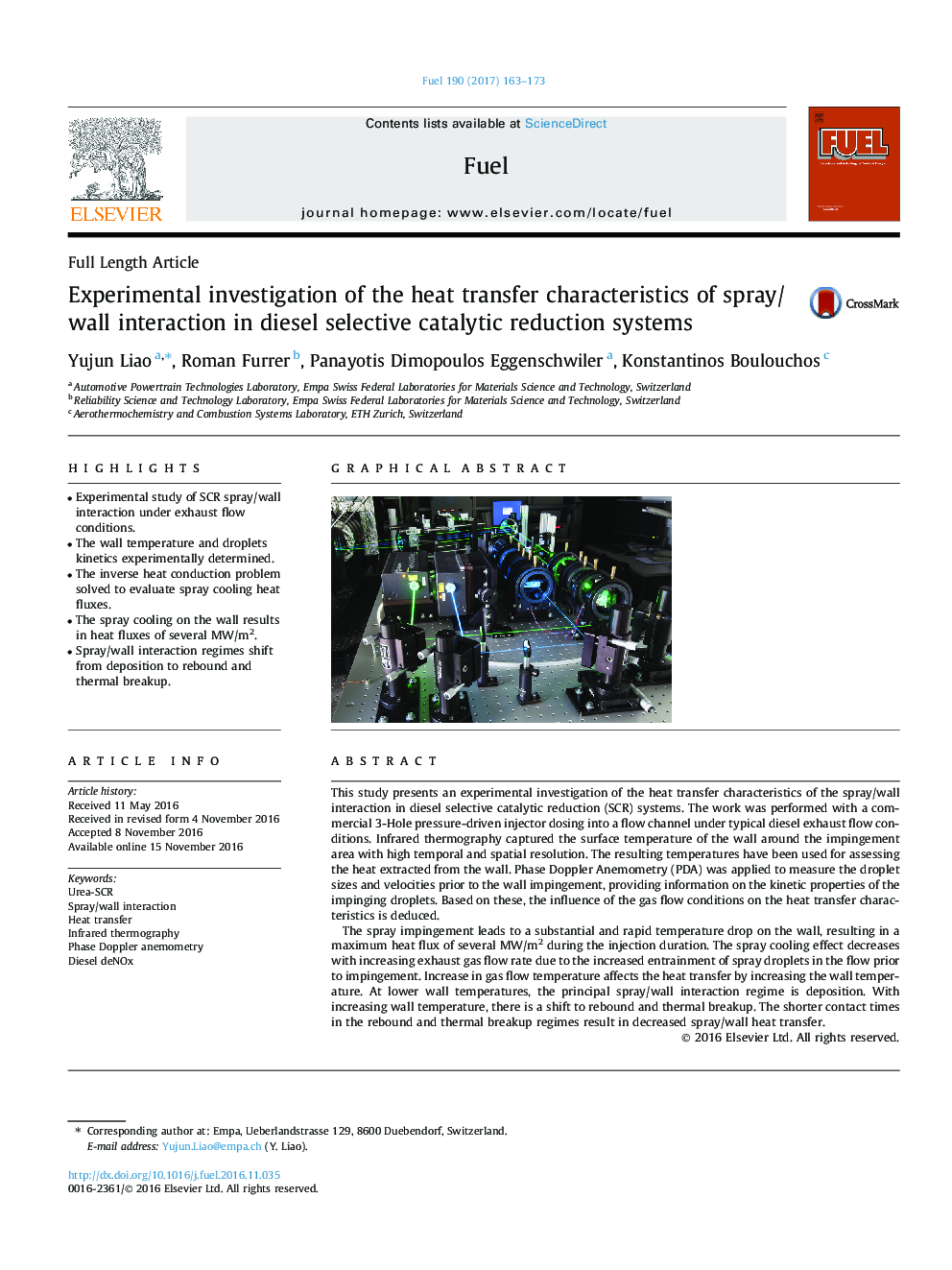| کد مقاله | کد نشریه | سال انتشار | مقاله انگلیسی | نسخه تمام متن |
|---|---|---|---|---|
| 6475558 | 1424974 | 2017 | 11 صفحه PDF | دانلود رایگان |
- Experimental study of SCR spray/wall interaction under exhaust flow conditions.
- The wall temperature and droplets kinetics experimentally determined.
- The inverse heat conduction problem solved to evaluate spray cooling heat fluxes.
- The spray cooling on the wall results in heat fluxes of several MW/m2.
- Spray/wall interaction regimes shift from deposition to rebound and thermal breakup.
This study presents an experimental investigation of the heat transfer characteristics of the spray/wall interaction in diesel selective catalytic reduction (SCR) systems. The work was performed with a commercial 3-Hole pressure-driven injector dosing into a flow channel under typical diesel exhaust flow conditions. Infrared thermography captured the surface temperature of the wall around the impingement area with high temporal and spatial resolution. The resulting temperatures have been used for assessing the heat extracted from the wall. Phase Doppler Anemometry (PDA) was applied to measure the droplet sizes and velocities prior to the wall impingement, providing information on the kinetic properties of the impinging droplets. Based on these, the influence of the gas flow conditions on the heat transfer characteristics is deduced.The spray impingement leads to a substantial and rapid temperature drop on the wall, resulting in a maximum heat flux of several MW/m2 during the injection duration. The spray cooling effect decreases with increasing exhaust gas flow rate due to the increased entrainment of spray droplets in the flow prior to impingement. Increase in gas flow temperature affects the heat transfer by increasing the wall temperature. At lower wall temperatures, the principal spray/wall interaction regime is deposition. With increasing wall temperature, there is a shift to rebound and thermal breakup. The shorter contact times in the rebound and thermal breakup regimes result in decreased spray/wall heat transfer.
Journal: Fuel - Volume 190, 15 February 2017, Pages 163-173
